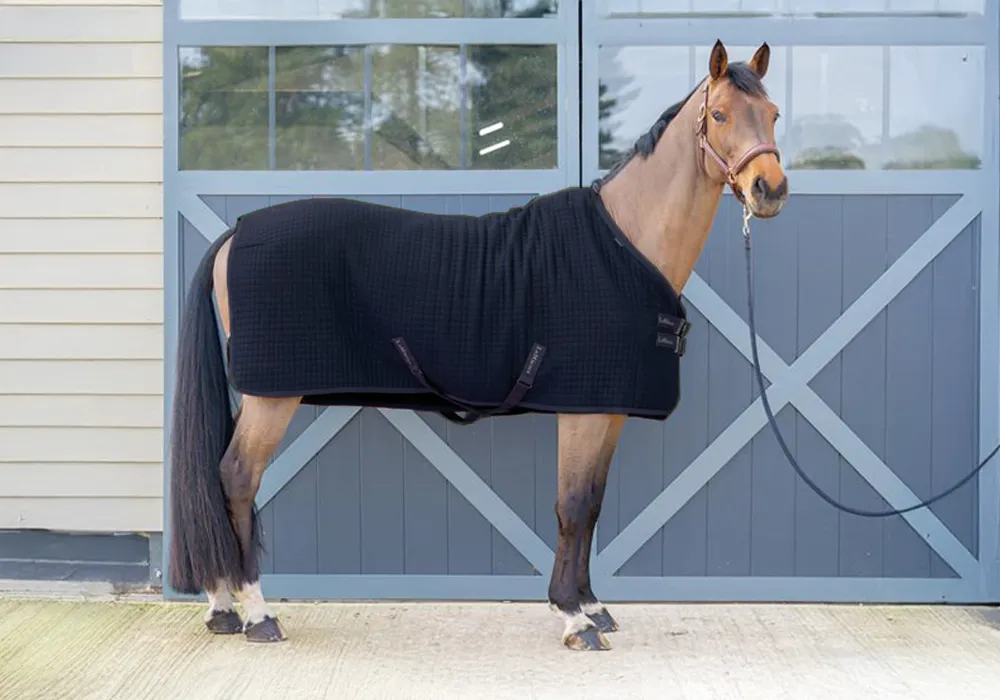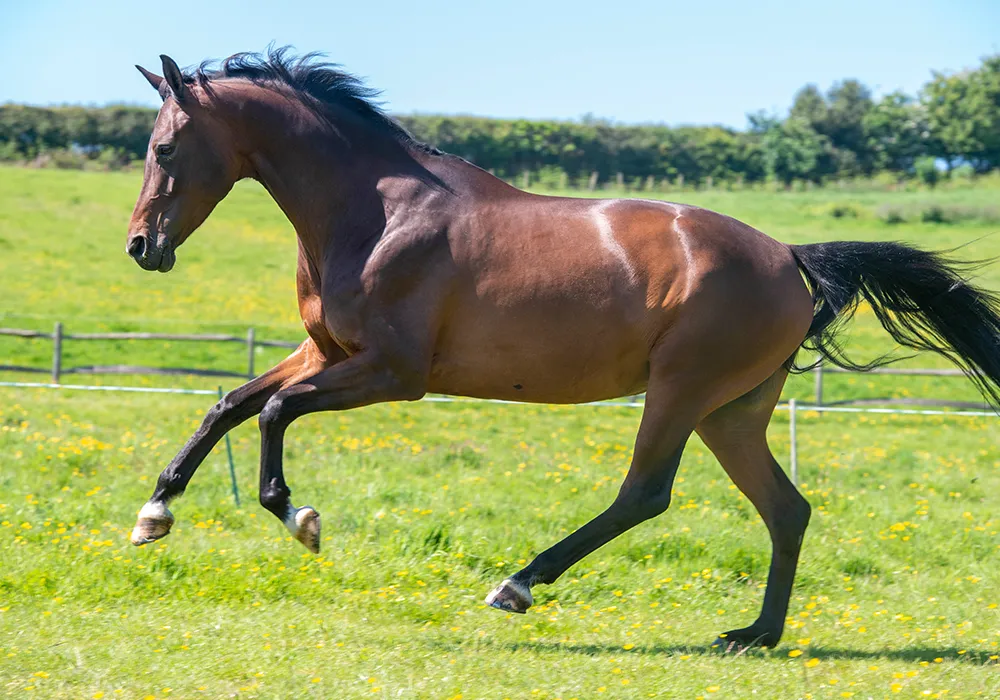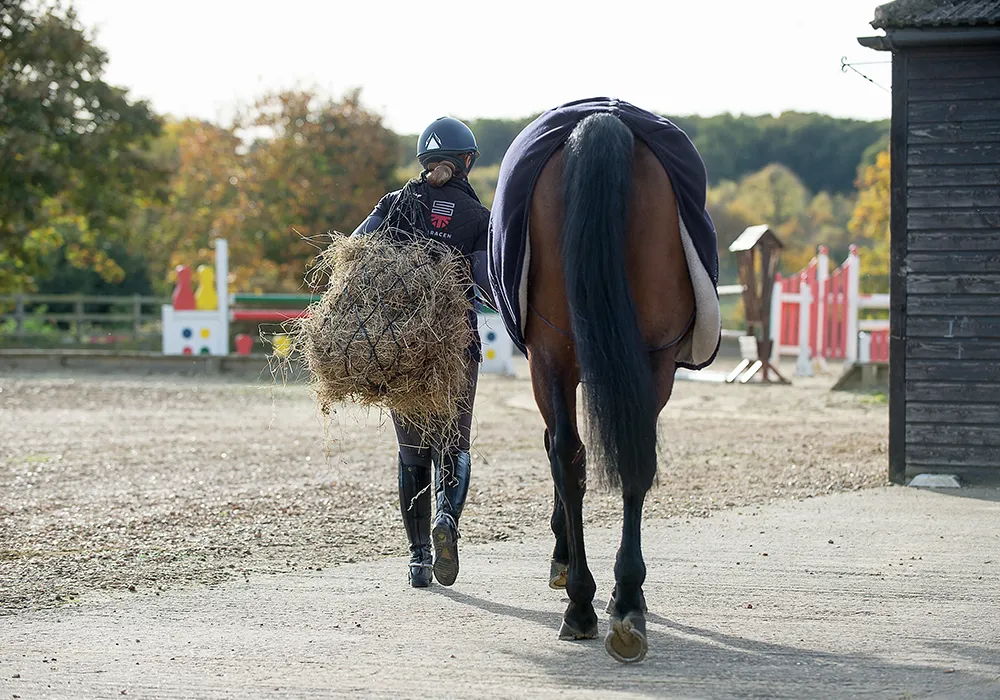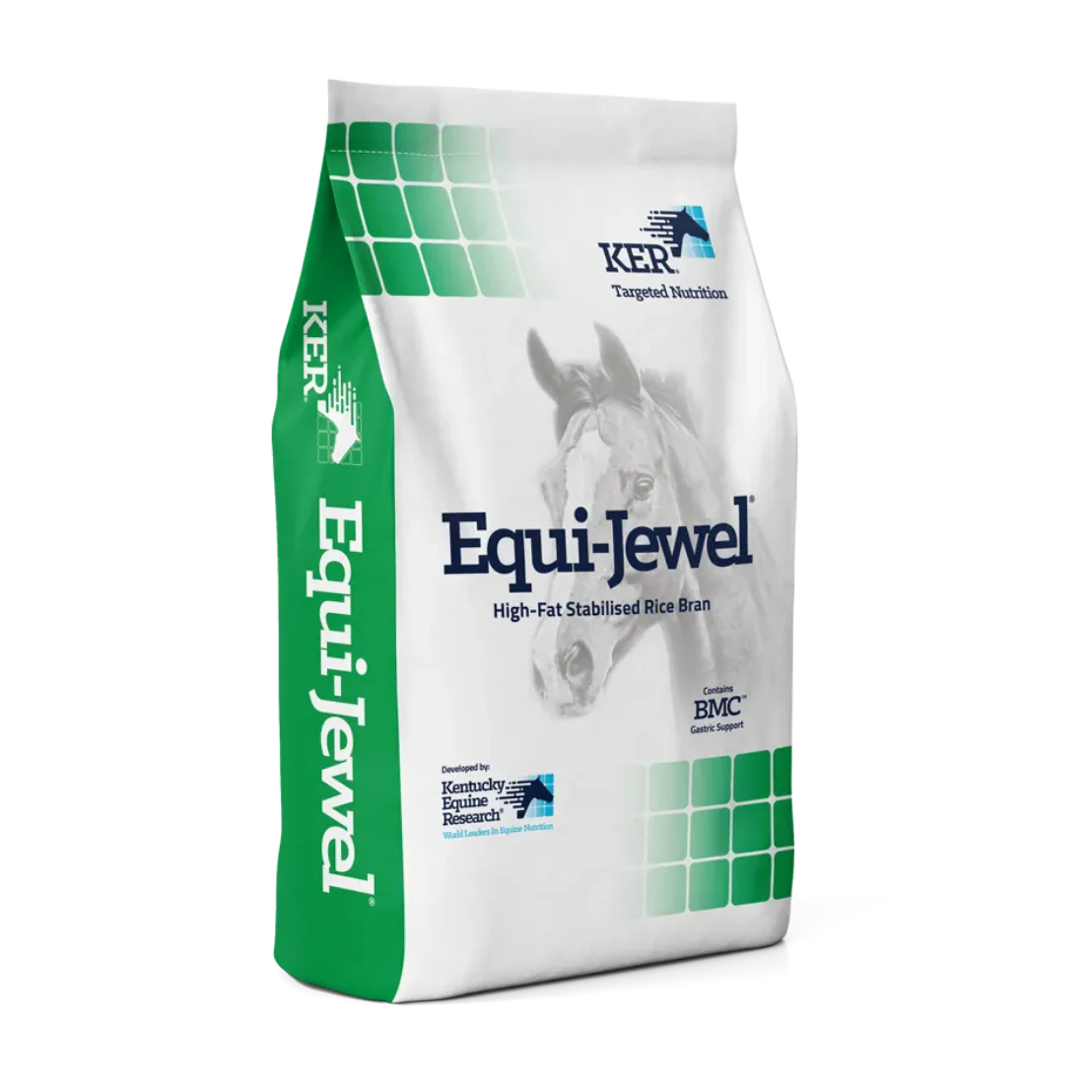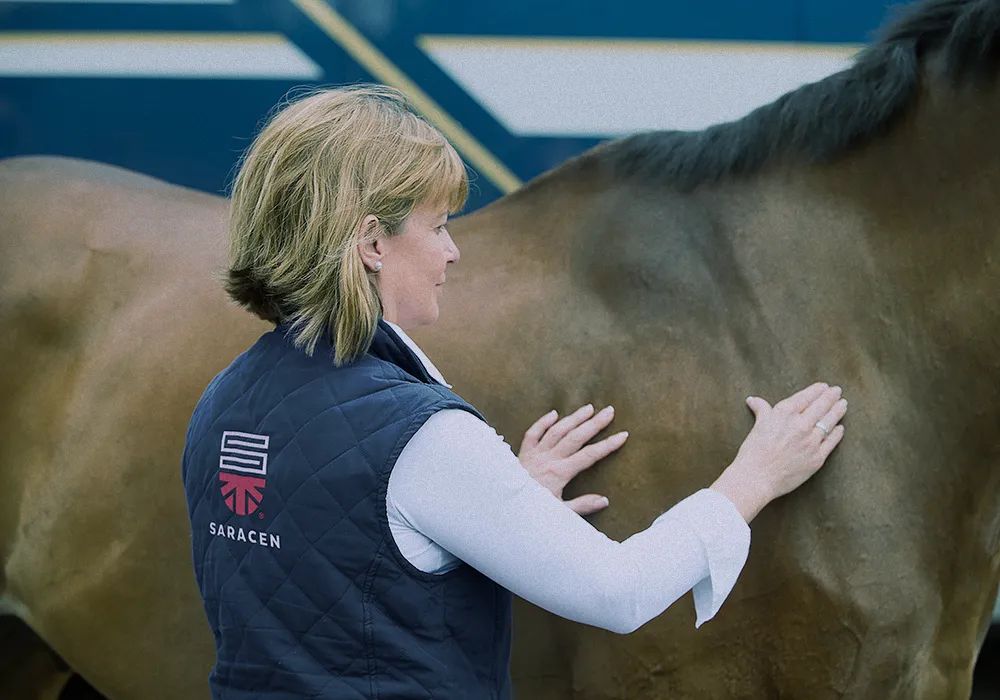Weight Management: Optimum Body Condition
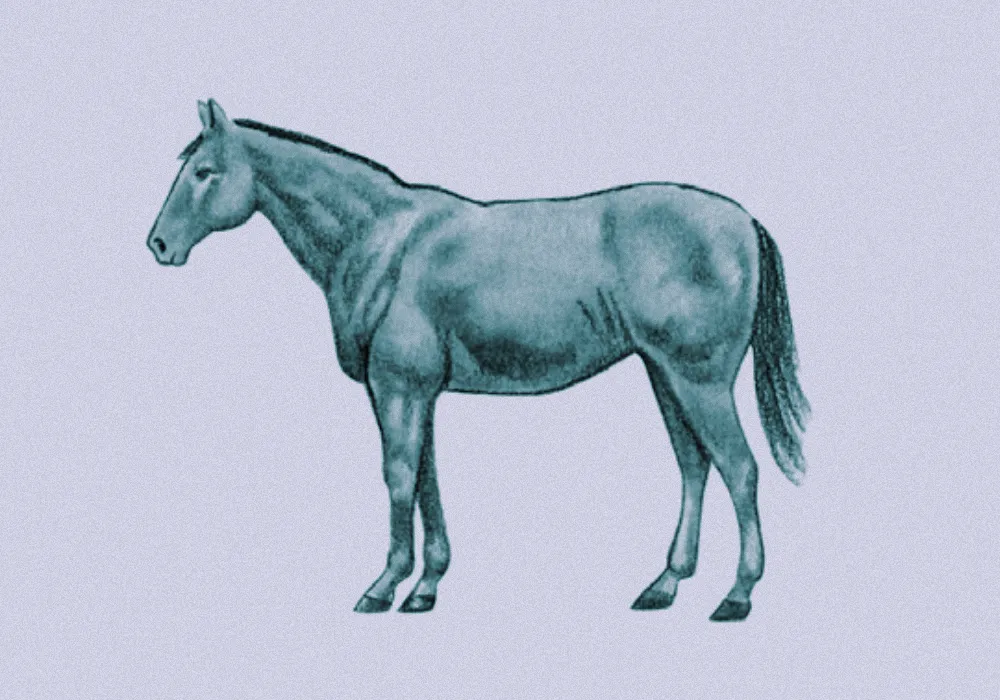
Optimum Body Condition
We are often asked ‘what is the optimum body condition score for my horse to be in?’ This can depend upon a number of factors, such as the type of work, the breed and health status of the individual horse. However, we do not want them too fat or too thin! If they are too fat we significantly increase the risk of metabolic disease and laminitis, as well as putting excess strain on cardiovascular and musculoskeletal systems. If they are too thin they will have limited energy reserves and will prematurely fatigue and have longer recovery rates between training sessions. So as a general rule of thumb the aim is to have a horse in the region of a BCS of 5 or 5.5.
Some horses may sit comfortably either side of these scores e.g. 4.5 or a 6 but please seek further advice if you are unsure about how to BCS and what is the ideal body condition score for your horse or pony.

1. Poor
Animal extremely emaciated; spinous processes, ribs, tail-head, tuber coxae, and tuber ischii projecting prominently; bone structure of withers, shoulders, and neck easily noticeable; no fatty tissue can be felt.
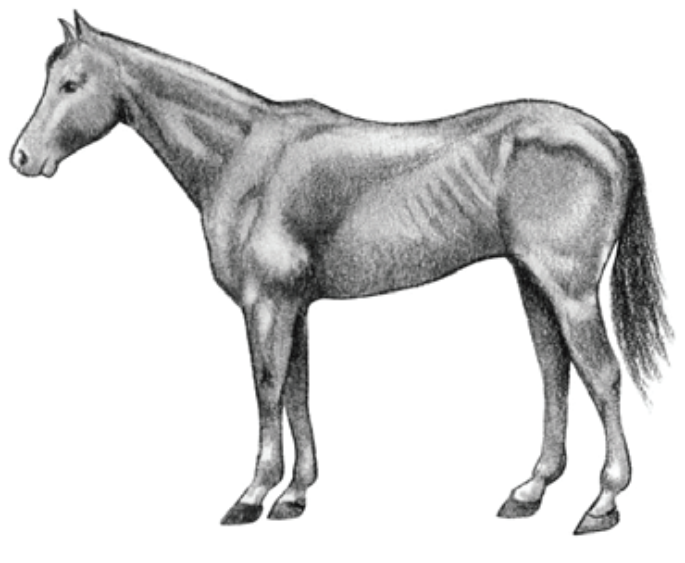
2. Very Thin
Animal emaciated; slight fat covering over base of spinous processes; transverse processes of lumbar vertebrae feel rounded; spinous processes, ribs, tail-head, tuber coxae, and tuber ischii prominent; withers, shoulders, and neck structure faintly discernible.

3. Thin
Fat buildup about halfway on spinous processes; transverse processes cannot be felt; slight fat cover over ribs; spinous processes and ribs easily discernible; tailhead prominent, but individual vertebrae cannot be identified visually; tuber coxae appear rounded but easily discernible; tuber ischii not distinguishable; withers, shoulders, and neck accentuated.

4. Moderately Thin
Slight ridge along back; faint outline of ribs discernible; tail-head prominence depends on conformation, fat can be felt around it; tuber coxae not discernible; withers, shoulders, and neck not obviously thin.

5. Moderate
Back is flat (no crease or ridge); ribs not visually distinguishable but easily felt; fat around tailhead
beginning to feel spongy; withers appear rounded over spinous processes; shoulders and neck blend smoothly into body.
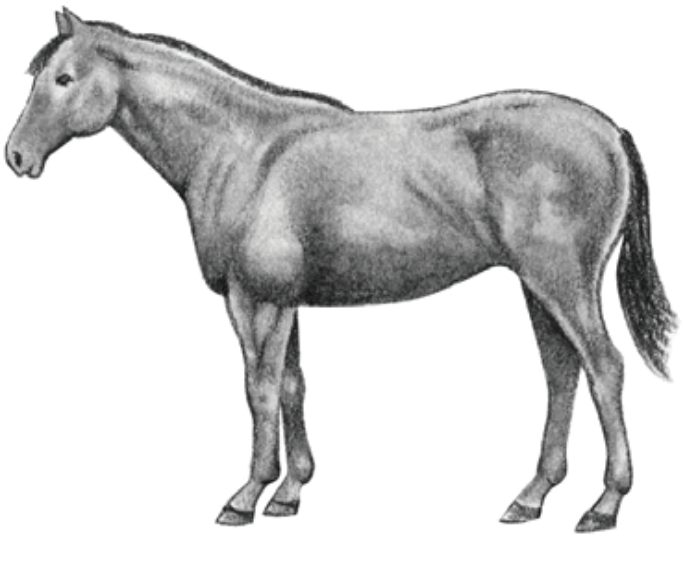
6. Moderately Fleshy
May have slight crease down back; fat over ribs fleshy/spongy; fat around tailhead soft; fat beginning to be deposited along sides of withers, behind shoulders, and along sides of neck.

7. Fleshy
May have crease down back; individual ribs can be felt, but noticeable filling between ribs with fat; fat around tailhead soft; fat deposited along withers, behind shoulders, and along neck.
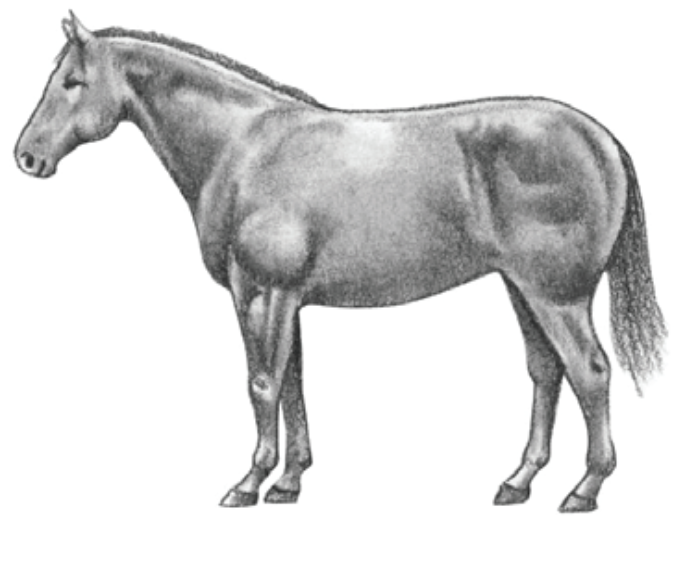
8. Fat
Crease down back; difficult to feel ribs; fat around tailhead very soft; area along withers filled with fat; area behind shoulder filled with fat; noticeable thickening of neck; fat deposited along inner thighs.
9. Extremely Fat
Obvious crease down back; patchy fat appearing
Need Guidance?
If you would like any further information on feeding your horse or pony please feel free to contact our nutritional team on +44 (0)1622 718 487, email info@saracenhorsefeeds.co.uk or fill out our Feed Advice Form.
